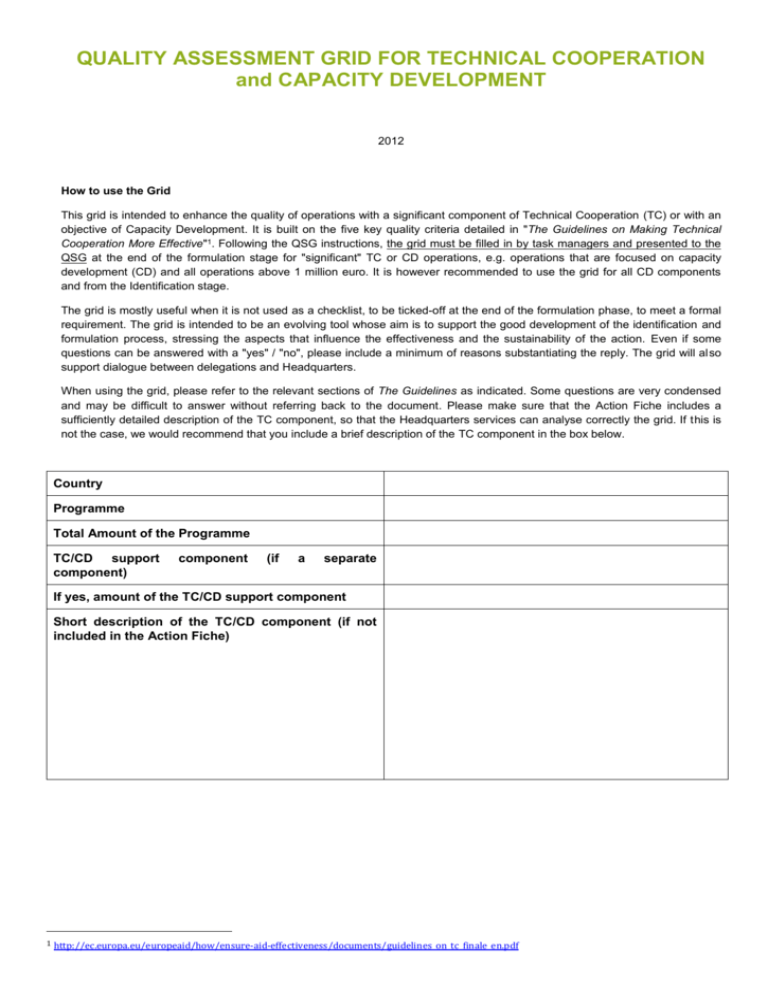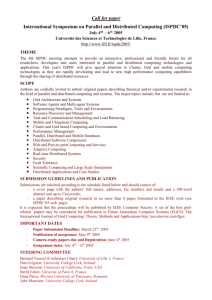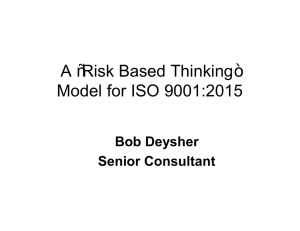QUALITY ASSESSMENT GRID - Capacity4Dev
advertisement

QUALITY ASSESSMENT GRID FOR TECHNICAL COOPERATION and CAPACITY DEVELOPMENT 2012 How to use the Grid This grid is intended to enhance the quality of operations with a significant component of Technical Cooperation (TC) or with an objective of Capacity Development. It is built on the five key quality criteria detailed in "The Guidelines on Making Technical Cooperation More Effective"1. Following the QSG instructions, the grid must be filled in by task managers and presented to the QSG at the end of the formulation stage for "significant" TC or CD operations, e.g. operations that are focused on capacity development (CD) and all operations above 1 million euro. It is however recommended to use the grid for all CD components and from the Identification stage. The grid is mostly useful when it is not used as a checklist, to be ticked-off at the end of the formulation phase, to meet a formal requirement. The grid is intended to be an evolving tool whose aim is to support the good development of the identification and formulation process, stressing the aspects that influence the effectiveness and the sustainability of the action. Even if some questions can be answered with a "yes" / "no", please include a minimum of reasons substantiating the reply. The grid will also support dialogue between delegations and Headquarters. When using the grid, please refer to the relevant sections of The Guidelines as indicated. Some questions are very condensed and may be difficult to answer without referring back to the document. Please make sure that the Action Fiche includes a sufficiently detailed description of the TC component, so that the Headquarters services can analyse correctly the grid. If this is not the case, we would recommend that you include a brief description of the TC component in the box below. Country Programme Total Amount of the Programme TC/CD support component) component (if a separate If yes, amount of the TC/CD support component Short description of the TC/CD component (if not included in the Action Fiche) 1 http://ec.europa.eu/europeaid/how/ensure-aid-effectiveness/documents/guidelines_on_tc_finale_en.pdf Purpose(s) of the TC/CD support M ore than one option possible (see section 2.2 and 4.1 of the Guidelines) 1. Capacity development: comprehensive approach that addresses a wide set of constraints in one or more organisations and which is linked to clear performance targets. □ Main objective □ Secondary objective □ Not an objective 2. Providing policy and/or expert advice (normally of short term duration). □ Main objective □ Secondary objective □ Not an objective 3. Support to implementation of projects/programmes. It may include activities as planning, management, supervision or direct gap filling. The support focuses directly on "getting things done". □ Main objective □ Secondary objective □ Not an objective 4. Preparation/facilitation of EU cooperation (or broader donor cooperation). Includes feasibility and preparatory studies, facilitation of dialogue between EU and partners, facilitation of programme development etc. □ Main objective □ Secondary objective □ Not an objective Please add comments about the purpose of the TC/CD support if relevant (see pages 10-12 of the Guidelines): 1. Fit to the context and existing capacity See section 3.2 of the Guidelines 1.1 Are there critical constraints in the context which could make CD support ineffective and impede achieving the purpose of the support ? If yes, how will they be addressed? Context constraints can include weak governance arrangements in the sector, limited incentives for civil servants to perform, or limited effective priority of the area in national politics, etc. See page 22-23 of the Guidelines. Conversely, are there opportunities in the context which could make CD support more effective ? 1.2 Has the existing capacity of the concerned partner(s) organisation(s) been assessed? Is it confirmed that the objectives and the scope of the CD support match the existing capacity to lead, manage and absorb the support? See page 23-24 of the Guidelines. 1.3 How have similar programmes and types of CD support worked in the current context? Please indicate which, if any, and why they have been successful. See page 22 of the Guidelines. 2. Adequate demand, commitment and ownership from the country partners See section 3.1 of the Guidelines 2.1 How have key stakeholders demonstrated demand for CD support, beyond reacting to proposals from the EU or consultants? See page 20-21 of the Guidelines. 2.2 How have the country partners lead or participated in the design of CD support, beyond formal consultation and endorsement of proposals and other requirements? See page 16 of the Guidelines. 3. Clear link to results and expected outcomes See section 4.2 of the Guidelines 3.1 Are results and/or outcomes defined beyond what the CD support will deliver? Please give examples of key targeted results at the level of enhanced capacity of organisation(s), if relevant outputs that the organisation(s) produce or at the level of outcomes. See page 30-36 in the Guidelines, including figure 4 and 5. 3.2 Have the country partners' inputs, which are required to sustain the results of the programme, been identified and specified? Resources can include staff, managers, involvement of senior staff and leaders, facilities and logistics. See pages 15-17 in the Guidelines. 3.3 What innovative forms of CD support have been considered, e.g. regional sources, staff exchanges or networking? See Box 25 on page 38 of the Guidelines. 4. Harmonized support See section 3.4 of the Guidelines 4.1 Has CD support from other donors in the sector been screened to ensure complementarity with that proposed by the EU? Have other main donors been consulted on the proposed CD support and have they endorsed the proposal? See page 26 of the Guidelines. 4.2 Which synergies and harmonisation options have been explored with country partners and other donors? If no harmonisation is possible at this stage, which steps will be taken to ensure that the CD support from the EU will be harmonised with other donors’ interventions in the future? See page 26 of the Guidelines. 5. Appropriate programme implementation arrangements See Chapter 5 of the Guidelines 5.1 Briefly describe the Project Implementation Arrangement. Will country partners lead and manage the programme? Is primary accountability of the programme appointed to domestic stakeholders? See page 47-50 of the Guidelines. 5.2 Will civil servants working in the programme receive topping-up (salary supplements, special allowances etc.) funded by the EU? Are they linked to clear performance targets? If these incentives are not following government regulations, which steps will be taken to align them, diminish any negative distortion and/or abandon the use of donor-funded toppingup? See page 14 and pages 43-51 in the Guidelines. 5.3. Given the nature of the programme and of the expected results, explain its level of integration in the broader structure or its level of autonomy. See page 46-47 in the Guidelines. 5.4 Are the EU’s and/or other donors’ role in the governance of the programme limited to oversight functions? See page 47-50 of the Guidelines







